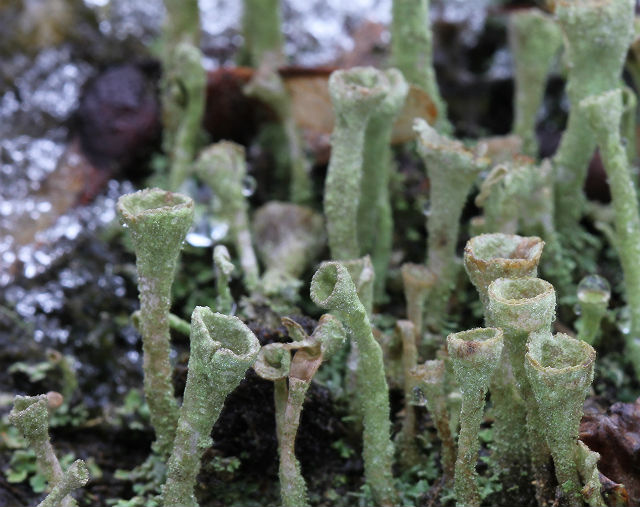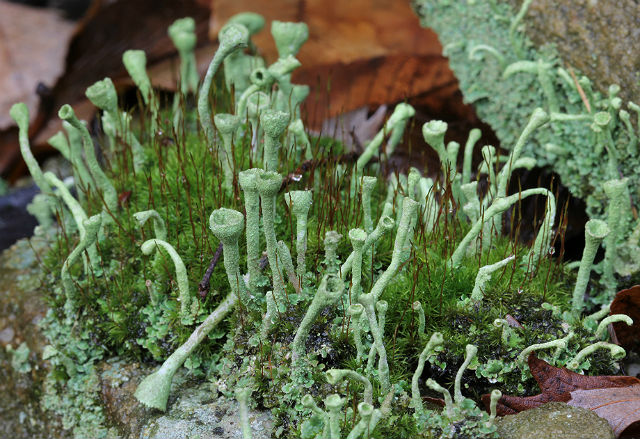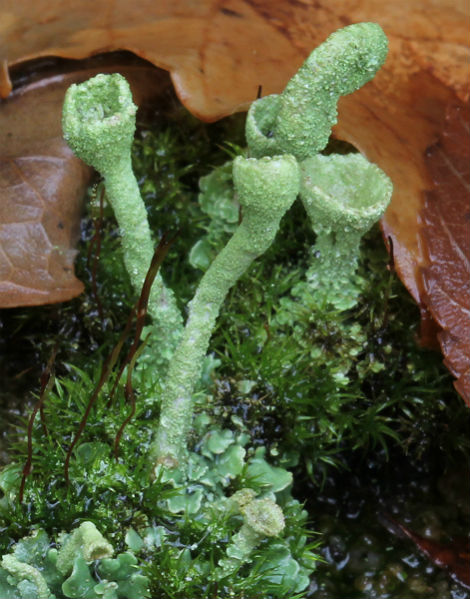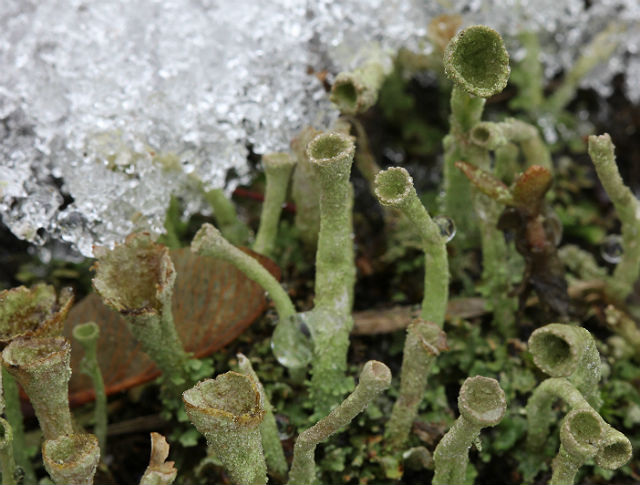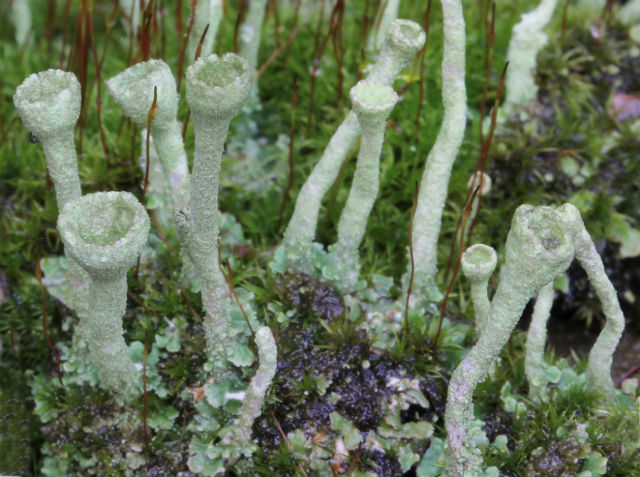Pixie Cup Lichen typically grows on moss on the forest floor, usually on logs or at the base of trees. I have these growing in the rock garden in my backyard. Like other types of lichens, it is a symbiotic relationship between algae and a fungus. The algae provide nutrients with their chlorophyll while being protected from drying out by the fungus.
They are shaped like somewhat battered and sand-blasted miniature golf-tees. This lichen has an extremely rough appearance. The rim of the cup often has a reddish tint. The stem has scales which become larger the further down, as it reaches the ground. The “undergrowth” is a mass of these flattish scales. They are only about half an inch tall.
The cup is thought to act as a spore dispersal mechanism when hit by raindrops. Pixie Cups and related species contain Didymic Acid which was once collected from the lichen and used in folk-lore medicine to treat tuberculosis.
Not only is it an example of a symbiotic relationship with a cool shape and texture, but Pixie Cup Lichen is a sign of life that can been seen in the winter if you do some careful searching.

